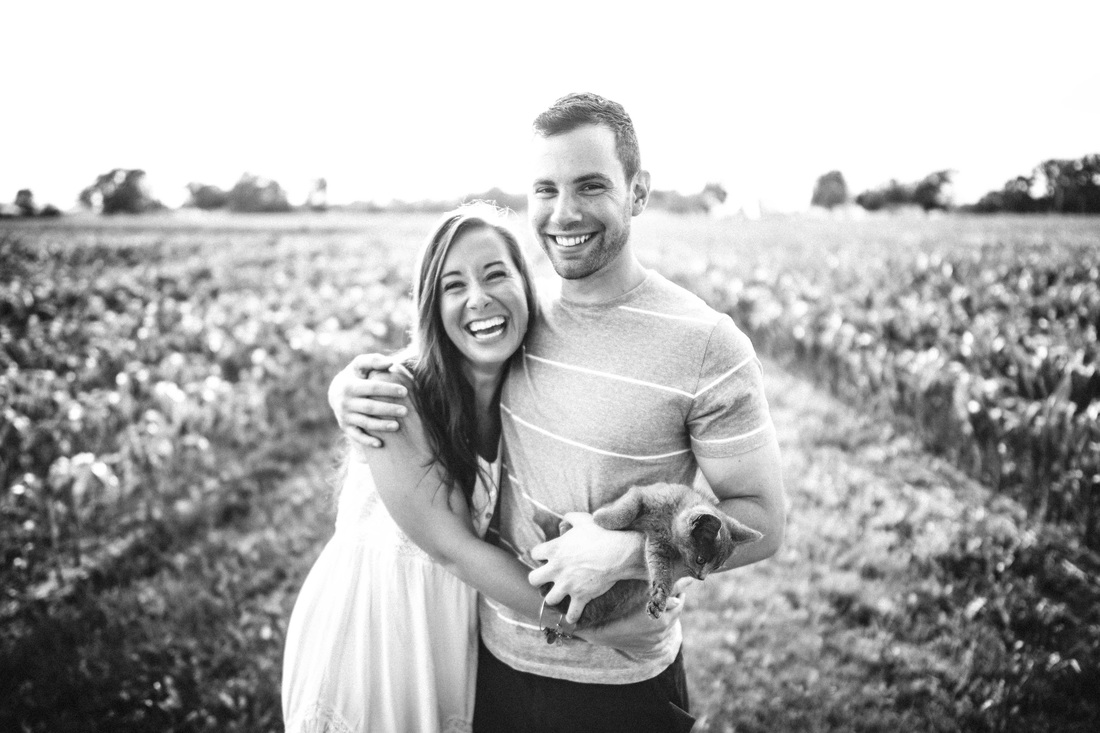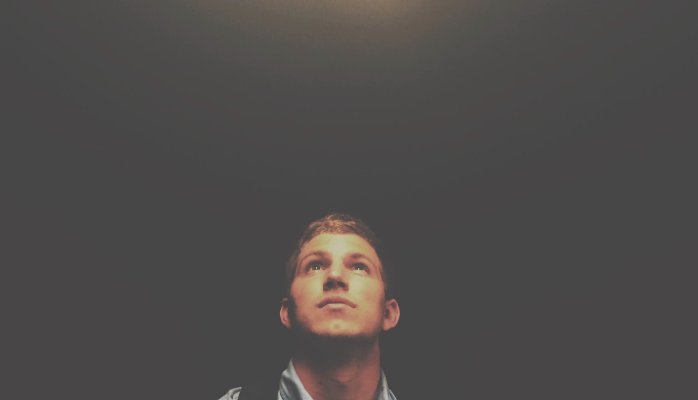|
DIY Advice
Around the Holidays, there's a lot of advice-giving that happens, especially from family members and friends you haven't seen for a while. Much of the advice is anecdotal but it comes from that good intention of helping another person out. Some advice can be step-by-step and clear, but most advice lacks empathy. It doesn't necessarily consider you, it considers only the person giving it. There are a lot of assumptions in it that their reality is similar to yours, when that could be completely off the mark. The advice I've found most useful has been what helped me figure it out for myself. It was self-referential, in that I already had the answer and just needed a few words and phrases from someone else to uncover it. There was a connectedness to it in that the person took the time to consider it from my vantage point. You + Me = We The idea of "co-emergence" is that you empathically place yourself in another's perspective while they do the same so that a solution is created, or rather co-created. From a Western perspective, you "walk a mile in their shoes" before advising them. From an Eastern perspective, one of my favorite sayings is, "The teacher and the taught create the teaching." When I look back on successful projects, decisions, and events, I can see the truth in both sayings. And when things didn't work out, I recall the situation being one-sided, not considering everyone involved. We often act from the idea that we are lone agents in the world. The very definition of "co-emergence" proves this impossible. Of course there's you and me, and our self-interest. But there is also the "we", and when two people act from that perspective, things seem to work out, and much more smoothly. A Mutual Handshake It's like going to a networking event and putting your hand out there for a handshake. When the other person does the same at the same time, the synchrony is clear and conversation flows easily. If you held back your hand until someone else put their hand out first or if you put your hand out first and the other person was slow to respond, things would be a little off. You may not pay it much mind, but it might feel awkward at the outset. In the same manner, if you're receiving advice without empathy, how can you be empathetic to turn the tide from personal annoyance to mutual benefit? And if you're the one giving advice, how can you imbue empathy into the conversation? -- Think of a time when you were getting or giving advice. Was the advice asked for or warranted? What role did empathy play in how the advice was received or given? Share your thoughts with me over email. What's Behind Saying "No"?
Recently, people have been talking about how to say "no" to potential connections like coffee invites or phone intros so you can stay focused on what you're doing. Saying "no" to possibilities - for work, collaboration, friendship, etc. - may limit our growth, but our busy calendars limit our time, leaving little choice but to filter options. "No" may be a symptom of a greater underlying problem - a lack of boundaries. Defining What's "Enough" We all need boundaries, in terms of defining what is "enough" for us. This goes beyond meetings to our work too. Going past the point of "enough" can be personally detrimental. Do you know when you have worked enough and need to stop? Do you know when your calendar is getting too filled and you need to stop adding to it? Knowing when to stop gives you the opportunity for a break, for alone time or an outing with someone. Now, saying "no" is less a reaction and more a conscious response. On the other hand, when you don't define what's enough for you, the prefix, "over", gets used a lot. You feel:
The list goes on. If you don't know your boundary, it gets defined for you, and you only learn of it after the fact. Then, you have to work a little harder to fix it. How To Set Boundaries Defining boundaries starts with saying "yes" to yourself. Look at your calendar and note how many items represent what you really want to do versus what you're doing for others (employer, business partner, colleague, etc.). Take an upcoming week and for each day, count the items that are for "yourself" and items that are for "others". On those days when items for "others" are greater than items for "yourself", either remove one of the "others" items or add a "yourself" item. This simple action allows you to define personal balance very specifically, prioritizing your interests and how you want to most want to spend your time. It's your time after all, even if you're renting it to an employer or client. How are you going to enjoy it? Balance = Energy Now, if someone invites you for a coffee or phone intro, instead of saying "no" outright because you're busy, you can make an intentional decision based on how you want to balance your day or week. You'll feel more energized either way, because you're planning by saying "yes" to the things you care about. Sometimes that's work you want to focus on and other times it's new connections you hope to pursue. Acting from a place of personal balance is additive, because regret, guilt, or "should" don't play into your decision. Saying "no" or "yes" is no longer an opportunity cost, it's just an opportunity. -- What boundaries have you set for yourself? Have you defined "enough" for your work, meetings, personal time? Share your thoughts with me over email. (These emails only come to me and are never shared with others. In fact, they often help me come up with ideas for future posts I can share with a broader audience.) The key to mindfulness is choice. You can choose anger, acceptance, denial, frustration, love, affection, judgment, humor, empathy, disappointment, kindness, etc.
Becoming aware that you have a choice can be a 2-sided coin:
This is where regular practice comes in. If choice is ever present, you can't be perfect the first time or even the thousandth time. You're liberated from the belief that you'll get there, because there is now. The practice of continuously choosing is the process of mindfulness. You always have a choice now, and in the next moment, and the next, and so on. In fact, it feels almost unfair that we have to choose all the time. So unfair that it's hard to take seriously, and we laugh at the option. And our attitude becomes relaxed and easy, making the attitudes of those around us easy, and the domino effect takes over. Knowing that we have the choice to define and redefine ourselves moment to moment is awesome to consider. And even if you consider it seriously, you'll simply end up smiling. -- A few links that inspired this post: Seth Godin: Attitude is a skill Greater Good Podcast: Srikumar Rao on Happiness at Work "Thou Mayest" passage from from East of Eden, by John Steinbeck -- Free Coaching: I'm offering FREE coaching during the week of Monday, October 26th to Friday, October 30th. It's a no-strings attached, open-ended 30 minutes on the phone where we can discuss stress, productivity, leadership, mindfulness, work/life balance, resilience, meditation, or whatever else you'd like to work on right NOW. Email me with 3 dates/times that fall during October 26th-30th if you're interested. More details next week. I can jump on a 2 foot high box from the ground with both feet planted because I can visualize myself doing it. Being able to see the process and the result is why I don't catch my foot on the box and fall forward.
I can also see myself clearing the edge of a 2.5 foot high box without falling, though it starts feeling a little out of my reach. If it's a 3 foot high box, I can't see myself completing the jump and that's when uncertainty sets in. The first doubt is mental. Seeing others clear 3, 4, or even 5 foot high boxes helps because then I know it's possible. Perhaps after months, maybe years of training my legs, I may be able to get there, but I will first and foremost need to see myself doing it without falling for it to be possible. Success in other areas Same goes with running a mile, or being a CEO, or starting a company, or cooking a Thanksgiving meal, or hiking the Grand Canyon. If you can see it, you can do it. If you doubt yourself, there's two options available to you:
Option 1 - Training so you can see This is a more linear approach to doing what you want. Say you want to get a promotion to a managerial level. You're not sure about your leadership capability though, so you read books, take a management class, practice delegating, learn how to motivate and question, and in general get better at managing people and projects. Over a period of time, you can see yourself being a manager because you've trained for it. Option 2 - Seeing so you can train Now take option 2, where you see yourself doing the thing you want to accomplish and figure out how to train accordingly. Using the same example of getting promoted to a manager, you start visualizing yourself leading people and projects. You not only mentally picture the reality, you also write down what it would be like to act as a manager versus an employee. You walk into the office and look at your projects with a managerial hat on, thinking, "What would a manager do?" You observe other managers you admire and mimic their habits and behaviors. Over a period of time, you feel confident that you can be a manager because you've been seeing yourself do it. What's the real difference? In both cases, there's practice and training involved, but from a slightly different perspective. You're still learning to be a manager, just from a different vantage point. Option 1 helps you train separate from your day-to-day until you feel ready to apply your training in your life. Option 2 helps you see how to train within your day-to-day and feel out the difference immediately in your life. One option is no better than the other, but typically we assume option 1 is the only option. Some of us come across option 2 and find it to be non-linear, and perhaps even a little strange. That's true of any new practice. It feels odd at first until you try it a few times. Option 2 will happen anyway In fact, there comes a point in option 1 when you've trained enough that you can start seeing yourself moving to the next level. The visualization becomes a reality in your mind at some point, and you feel like you can take a leap of faith, especially if it's adding inches to your box jump. You can't tell why you feel that you can do something you thought you couldn't do before, but you just know. Option 2 simply starts at that inflection point. It assumes you're there already and asks you to train in a way that fits that new imagined reality. This works for things you do not want to do as well, such as habits you want to break, or behaviors you want to change. You have to be able to see yourself notdoing them in order for them to be real. As Seth Godin puts it, imagining is usually the first step. Which option do you usually choose? Does there come a point when you can see yourself doing something you hadn't done before? How does that change your ability to do it? I'd love to hear your perspective, so email me your thoughts. I've been watching Game of Thrones lately, and observing the different factions rally troops behind a cause with symbols, words, rituals, and hierarchy lets me see the Machiavellian conditioning at play:
It's a show, based on a book, about a fantasy world, in one author's mind. It lets you see from an objective standpoint the symbols of pride, power, and influence we hold so dearly due to the conditioning of our own culture:
How are our flags different from the GoT banners? How are our rituals and salutes different from the indoctrination in the show? How are our slogans different from the oaths taken by the characters? It seems that with politics, religion, and money, things quickly get complicated because it's difficult to look at ourselves from an external lens. It's hard to be aware and empathetic when we are directly involved. One of my favorite quotes is by Upton Sinclair: "It's difficult to get a man to understand something when his salary depends on his not understanding it." This can either be viewed as a judgment to blame someone for not understanding something, which does little except outsource ownership of the situation. Or the quote can be used as an observation to help yourself or others become aware of their underlying motivations. Once you're aware, you can make more informed decisions. That's situational awareness in action. With this awareness mindset, you tune into the carefully crafted language in media, politics, and religion meant to evoke a certain sentiment, or agenda. You pay attention to the messaging that overlays the root of the problem. You see the conditioning behind the culture. You see through what is being said to the true intention that lies underneath. This process invariably starts with questioning what you see:
When you travel, you think of these questions naturally, opening up a novel world, and breaking down what you knew before. You can also practice this where you live in everyday situations:
You're building an "awareness" muscle that allows you to step out of a situation and look from an observer standpoint at what is happening. You're still involved and connected, in a much more alert and inquisitive way. As you practice awareness in real-life scenarios, you'll notice being more situationally aware in general. What are ways you use to objectively observe a situation? How do keep an eye out for blind spots? Please share your thoughts via email. I'm curious about your experiences. |
Coaching Consulting
|







 RSS Feed
RSS Feed